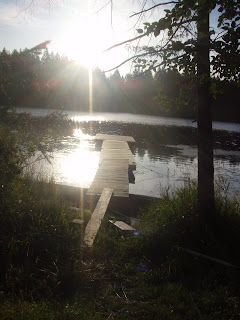Technologies, Connection, Structures, Sources

When designing and establishing systems we must prioritize our investments first in structures and technologies that create energy, second that save energy and last that consume energy. It is inevitable that we will spend energy to initially establish our habitat. This is not a problem, so long as the designed habitat produces more energy over its lifetime than was initially spent. All systems should provide their own energy needs and remove themselves as much as possible from a dependence on distant sources. “When the needs of a system are not met from within, we pay the price in energy and pollution.” (Mollison)
When designing to the site-specific components the first priority is water, as water is an energy that can be put to great use. Higher elevation rainwater storage (earth dams and tanks) should be designed into a landscape whenever possible. This is done to provide gravity fed w
 ater for crops houses and other uses at lower elevations. Swales are always planted to trees. They are tree-growing systems. The trees use water harvested by swales to turn the suns energy into wood and foods, like nuts and fruit. The wood can be used to build and maintain structures, provide fiber and heat, for solar efficient homes, in high efficiency stoves. By first investing in the water structures we have created numerous energy storage in our settlement.
ater for crops houses and other uses at lower elevations. Swales are always planted to trees. They are tree-growing systems. The trees use water harvested by swales to turn the suns energy into wood and foods, like nuts and fruit. The wood can be used to build and maintain structures, provide fiber and heat, for solar efficient homes, in high efficiency stoves. By first investing in the water structures we have created numerous energy storage in our settlement.Social Components
People, Culture, Trade, Finance
Cooperation not competition is the key. Presently my wife and I live on an apple orchard, together we contribute 40-50hr/week of our time and energy to the orchard. We are not the owners. In exchange for our efforts, we get a roof over our heads, clean and heal
 thful food from the garden, access to land for our own food production and a good community. Assessing this arrangement from a purely financial perspective would neglect all other levels of wealth that we obtain from the relationship. Further more we can be assured that a significant proportion of our time and energy will stay within the systems on the farm. If we were to have regular jobs, within the formalized economic system of distant capital and finance, most of our time and energy would inevitably by exported out of the local environment and economy. By working to keep our time and energy cycling in the local economy through a non formalized system of exchange: trade barter and cooperation, we work to ensure our efforts go towards building the health and security of our community. We reduce our need for monetary gain, as our basic needs of clean food, clean water, clean shelter and healthy community are produced through our basic day-to-day interactions.
thful food from the garden, access to land for our own food production and a good community. Assessing this arrangement from a purely financial perspective would neglect all other levels of wealth that we obtain from the relationship. Further more we can be assured that a significant proportion of our time and energy will stay within the systems on the farm. If we were to have regular jobs, within the formalized economic system of distant capital and finance, most of our time and energy would inevitably by exported out of the local environment and economy. By working to keep our time and energy cycling in the local economy through a non formalized system of exchange: trade barter and cooperation, we work to ensure our efforts go towards building the health and security of our community. We reduce our need for monetary gain, as our basic needs of clean food, clean water, clean shelter and healthy community are produced through our basic day-to-day interactions.Abstract Components
Timing, information, ethics
Without an ethic or belief structure and actions in relation to survival on our planet, permaculture has no starting point. The basic permaculture ethic is as follows:
Care of the earth
Care of People

Return of Surplus to the above two ends (can also be understood as setting limits to growth)
With the ethic as our sounding board, we can use all available information to design healthy communities and provide for those communities without degrading local and distant ecology. In order to spread good design we must spread information to where it is needed and assist others who are trying to learn. As much as we need to combat against a lack of information, we should guard against an over abundance of data. “Information is only a resource if acted upon.” (Mollison) At some point we need to take a step forward and get our hands dirty.
It is only through the functioning connections between components that a complete whole system design can be achieved. The designed systems must maintain and build the health of the local environment and work for its occupants, not distant sources of capital, if it is to be sustainable. This can only be achieved by analyzing the needs and products of various components and placing those components where they supply each others needs and best utilize the inherent energy flows of the landscape and climate. Organic gardening is vital to any sound design, as we all have a right to clean food, but it must be placed appropriately within the context of the whole systems design that is known as permaculture.






















